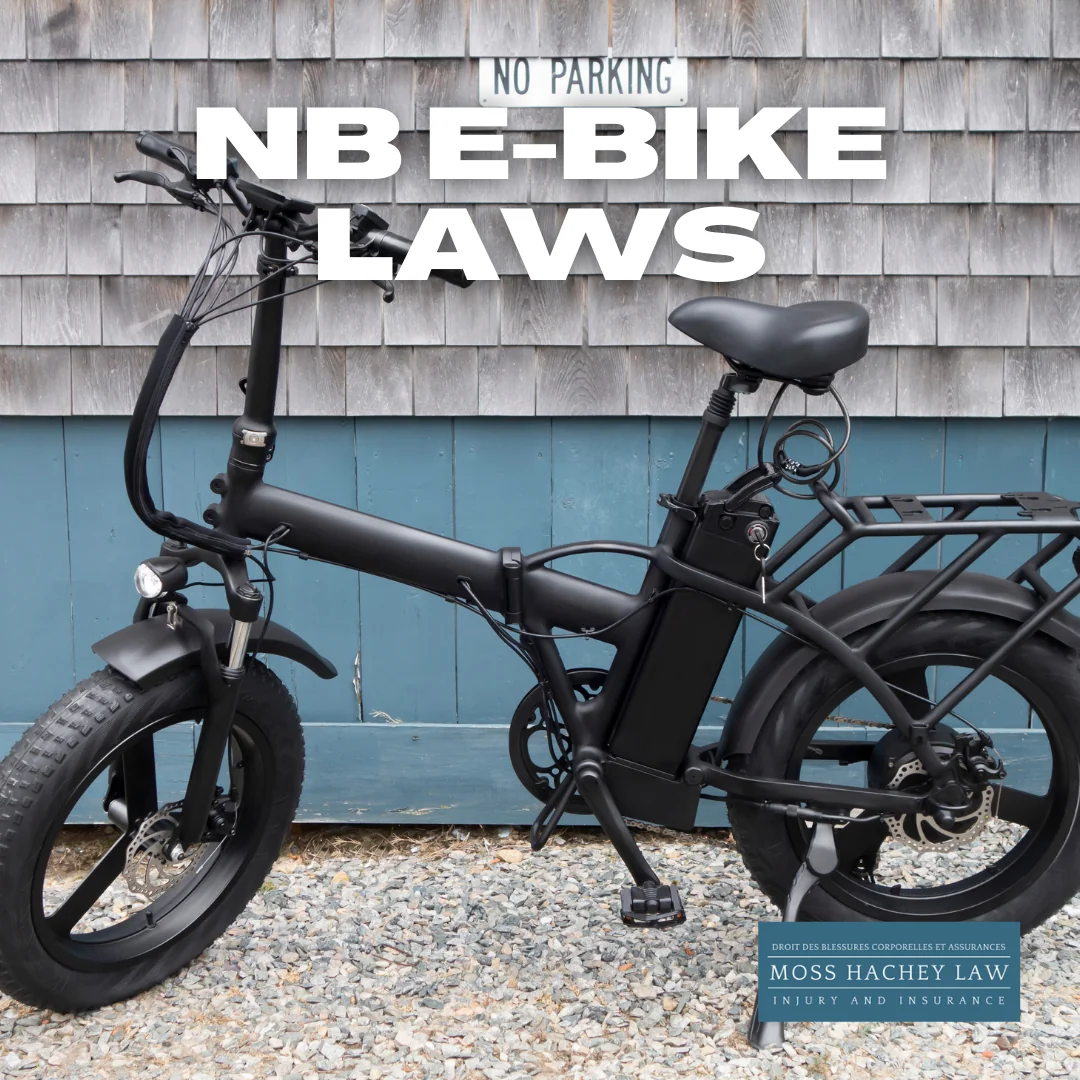Electric bikes or E-bikes are a popular summer experience, and you may have noticed an increase of these in the recent months and years in New Brunswick. This blog is to help new users of E-bikes, or who are interested in the New Brunswick law around their use.
E-Bikes are similar to bicycles, as you can pedal them, however they are also equipped with a small battery-powered motor. New Brunswick’s Motor Vehicle Act has a definition for ‘motor-driven cycles’, which you can read here.
E-bikes fall under the definition of a ‘motor driven cycle’, but not a ‘motorcycle’ or a ‘bicycle’. This means that while users of E-bikes need to follow the NB Motor Vehicle Act, there are unique laws that would (or wouldn’t!) apply to them.
E-bikes users must be mindful of the laws, including the following laws:
- You cannot use any controlled-access highway that is prohibited to bicycles or pedestrians (i.e. a bridge with no pedestrian access);
- You cannot operate an E-bike at a speed greater than 60km an hour without having a headlamp equipped;
- You can stop and park your E-bike on the side of the roadway at night-time.
- There is a gap in the legislation as the Act requires Motorcycle and Bicycle users to wear a helmet, however, does not explicitly state that motor-driven cycles should wear a helmet. We always recommend wearing a helmet however for your own safety, as concussions and other injuries can occur with the use of an E-bike.
Different from motorcycle users, who must apply for a specific motorcycle license, there is no requirement for E-bike users to obtain a specialized driver’s license. The Motor Vehicle Act does mention that regulations for E-bikes may be made in the future, however, as of 2021, there have been no regulations enacted.
The Federal Motor Vehicle Safety Regulations, which New Brunswickers would also be subject to, used to define a ‘power-assisted bicycle’, however, this definition was repealed in 2020. You can read the definition here.
Many of the E-bikes currently sold meet this old Federal definition, specifically the maximum speed of 32km.
Other Maritime Provinces have enacted their own Regulation regarding E-bikes. In PEI, the Province recently enacted Power-Assisted Bicycles Regulations which contains a similar definition to the repealed Federal act. The PEI Act states that users must meet the following requirements:
- Use bicycle lanes when provided
- Use the shoulder of the highway
- E-bikes are not to be used on a sidewalk or walkway
- E-Bikes are only used on trails within the summer months
- E-Bike users must give way to a pedestrian or bicycle and keep a safe distance;
- E-Bike users cannot travel at a speed that is “markedly greater” than nearby pedestrians;
- E-Bike users must have a horn or bell available;
- E-Bike users must use a headlight at night or near sunset and sunrise;
- The minimum age of an E-bike user is 16 years old;
- E-bikes must only have passengers if they are manufactured to carry them;
- Safety helmets must be worn at all times, and can be the same helmet as a bicycle;
- E-Bike users must report any accident to a peace officer without delay.
As E-Bikes are a new commodity in New Brunswick, we expect the Government will enact similar legislation to PEI shortly.
As always, any accident or injury involving E-bikes or an E-bike and a pedestrian would cause the E-bike user to be potentially liable for injuries. If you have been injured on an E-Bike, or due to the negligent use of an E-Bike, contact Moss Hachey Law’s personal injury lawyers for more information.
This blog entry contains information of a general nature only and should not be relied on for legal advice. The information is currently only to the date of publication and may be subject to changes.




